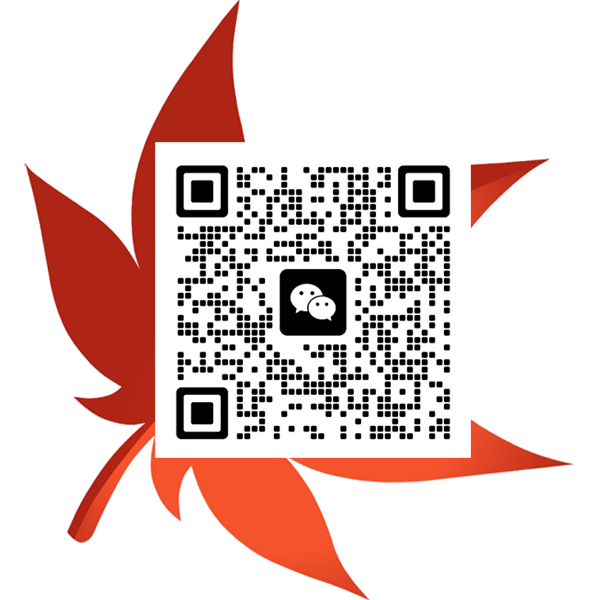中文
32129 – 其他医疗技师和技术员
其他医疗技师和技师包括医疗技师和技术员,例如饮食技师、眼科医师、假肢医师、矫形师、假肢技师和矫形器技师。饮食技术人员受雇于医疗保健和商业食品服务机构,例如医院、扩展护理机构、疗养院、学校、自助餐厅和快餐店。眼科医生受雇于定制眼部修复实验室,或者他们可能是个体经营者。假肢师、矫形器师以及假肢和矫形器技术人员受雇于医院、诊所、假肢和矫形器实验室以及假肢设备制造公司。假肢师和矫形器师也可以是个体经营者。
标题索引
- 航空医学教员
- 航空医疗技术员
- 航空医学技术员
- 见习眼科医生
- 人工眼制造商
- 假肢组装机
- 假肢修整器
- 假肢制造商
- 航空医学技术员
- 牙套制造商
- 认证矫形器 (CO)
- 认证的童童师 (C Ped)
- 认证假肢师
- 认证假肢矫形师 (CPO)
- 透析技师
- 透析技师
- 膳食技术员
- 膳食技师
- 食品和营养技术员 - 营养学
- 血液透析技术员
- 血液透析技师
- 肾透析技师
- 肾透析技师
- 眼科修复师
- 眼科医生
- 眼科医生
- 骨科器械装配工
- 骨科技工
- 矫形技师
- 矫正师
- 矫形器修复师
- 恋童癖者
- 假肢助手
- 义肢助理
- 假肢技师
- 假肢矫形技术员
- 义肢师
- 义肢助理
- 假肢矫形师
- 注册矫形技师 (RTO)
- 注册假肢和矫形技师 (RTPO)
- 注册假肢技师 (RTP)
- 手术器具装配工
- 外科钳工
主要职责
该小组履行以下部分或全部职责:
膳食技术员
- 协助营养师或营养师计划和监督食品服务运营
- 在营养师或营养师的指导下为个人或团体计划菜单和饮食
- 协助监督准备和提供食物的人员
- 帮助患者选择菜单项
- 协助营养师研究食品、营养和食品服务系统。
眼科医生
- 设计、制造和适配眼部假体和适形器,并可能设计和制造植入物
- 画出人造眼睛的虹膜和瞳孔
- 清洁和修复眼部假体
- 就深度知觉的丧失以及假眼的护理和使用向患者提供建议
- 修理和维护制造和实验室设备
- 请咨询眼科医生,了解眼部假体的插入。
假肢和矫形器
- 设计、制造和安装假肢和矫形器具,例如假肢、牙套或支架
- 解释医生的规格并检查和测量患者以开发器具的工作草图
- 制作和修改接受假肢或矫形器的区域的石膏模型
- 安装、调整和维修电器
- 建议患者使用和护理假肢和矫形器
- 监督和指导假肢和矫形器技术人员的活动。
假肢和矫形技术人员
- 根据图纸、尺寸和石膏模型,使用金属、塑料和皮革等多种材料组装或建造假肢和矫形器具
- 修复、重建和修改假肢和矫形器具或矫形鞋
- 可以对患者进行身体或肢体测量。
就业要求
- 饮食技术人员需要完成两到三年的饮食技术大学课程并接受监督实践培训。
- 眼科医生需要完成美国眼科医生协会的教育计划和有监督的实践培训,或者在经过认证的眼科医生指导下完成为期五年的有监督的实践培训计划。
- 通常需要国家眼科医生考试委员会的认证。
- 假肢师和矫形器师需要为期两年的假肢和矫形器技术大学课程以及三年的监督实践培训。
- 可能需要加拿大假肢和矫形器认证委员会 (CBCPO) 的认证。
- 假肢和矫形器技术人员通常需要两到三年的假肢和矫形器大学课程,一到两年的监督实践培训或中学毕业,以及在认证假肢师或矫形器师指导下长达四年的监督实践培训。
- 可能需要在加拿大假肢矫形师协会 (CAPO) 注册。
附加信息
- 假肢和矫形器技术人员可以成为认证的假肢师或矫形器师,额外两年作为注册假肢或矫形器技术员的经验,并完成加拿大假肢师和矫形器认证委员会的认证考试。
排除
- 治疗和评估中的其他技术职业 ( 32109)
- 医学化验师(32120)
- 医疗放射技师(32121)
- 医学超声医师 ( 32122)
- 心脏病技师和电生理诊断技师(32123)
- 药房技术员(32124)
- 呼吸治疗师、临床灌注师和心肺技师 ( 32103)
- 动物卫生技师和兽医技师(32104)
- 医学实验室助理及相关技术职业(33101)
English
32129 – Other medical technologists and technicians
Other medical technologists and technicians include medical technologists and technicians, such as dietary technicians, ocularists, prosthetists, orthotists, prosthetic technicians and orthotic technicians. Dietary technicians are employed in health care and commercial food service establishments such as hospitals, extended care facilities, nursing homes, schools, cafeterias and fast food outlets. Ocularists are employed in custom ocular prosthetic laboratories, or they may be self-employed. Prosthetists, orthotists and prosthetic and orthotic technicians are employed in hospitals, clinics, prosthetics and orthotics laboratories, and prosthetic device manufacturing companies. Prosthetists and orthotists may also be self-employed.
Index of titles
- Aeromedical instructor
- Aeromedical technician
- Aeromedicine technician
- Apprentice ocularist
- Artificial eye maker
- Artificial limb assembler
- Artificial limb finisher
- Artificial limb maker
- Aviation medicine technician
- Brace maker
- Certified orthotist (CO)
- Certified pedorthist (C Ped)
- Certified prosthetist
- Certified prosthetist-orthotist (CPO)
- Dialysis technician
- Dialysis technologist
- Dietary technician
- Dietary technologist
- Food and nutrition technician - dietetics
- Hemodialysis technician
- Hemodialysis technologist
- Kidney dialysis technician
- Kidney dialysis technologist
- Ocular prosthetist
- Ocularist
- Ocularist technician
- Orthopedic appliance assembler
- Orthopedic mechanic
- Orthotic technician
- Orthotist
- Orthotist-prosthetist
- Pedorthist
- Prosthetic aide
- Prosthetic assistant
- Prosthetic technician
- Prosthetic-orthotic technician
- Prosthetist
- Prosthetist assistant
- Prosthetist-orthotist
- Registered orthotic technician (R.T.O.)
- Registered prosthetic and orthotic technician (R.T.P.O.)
- Registered prosthetic technician (R.T.P.)
- Surgical appliance fitter
- Surgical fitter
Main duties
This group performs some or all of the following duties:
Dietary technicians
- Assist dietitians or nutritionists to plan and supervise food service operations
- Plan menus and diet for individuals or groups under the direction of a dietitian or nutritionist
- Assist in the supervision of personnel who prepare and serve food
- Help patients select menu items
- Assist dietitians with research in food, nutrition and food service systems.
Ocularists
- Design, fabricate and fit ocular prostheses and conformers, and may design and fabricate implants
- Paint the iris and pupil of artificial eyes
- Clean and restore ocular prostheses
- Advise patients concerning the loss of depth perception and the care and use of ocular prostheses
- Repair and maintain fabrication and laboratory equipment
- Consult with ophthalmologists concerning insertion of ocular prostheses.
Prosthetists and orthotists
- Design, fabricate and fit prosthetic and orthotic appliances such as artificial limbs, braces or supports
- Interpret physicians' specifications and examine and measure patients to develop working sketches of appliances
- Make and modify plaster casts of areas to receive prostheses or orthoses
- Fit, adjust and repair appliances
- Advise patients in the use and care of prostheses and orthoses
- Supervise and direct the activities of prosthetic and orthotic technicians.
Prosthetic and orthotic technicians
- Assemble or build prosthetic and orthotic appliances according to drawings, measurements and plaster casts using a variety of materials such as metals, plastics and leathers
- Repair, rebuild and modify prosthetic and orthotic appliances or orthopaedic footwear
- May take the body or limb measurements of patients.
Employment requirements
- Dietary technicians require completion of a two- to three-year college program in dietary technology and supervised practical training.
- Ocularists require completion of the education program of the American Society of Ocularists and supervised practical training or a five-year supervised practical training program under a certified ocularist.
- Certification by the National Examining Board of Ocularists is usually required.
- Prosthetists and orthotists require a two-year college program in prosthetics and orthotics technology and three years of supervised practical training.
- Certification by the Canadian Board of Certification of Prosthetists and Orthotists (CBCPO) may be required.
- Prosthetic and orthotic technicians usually require a two- to three- year college program in prosthetics and orthotics and one to two years of supervised practical training or completion of secondary school and up to four years of supervised practical training under a certified prosthetist or orthotist.
- Registration with the Canadian Association of Prosthetists and Orthotists (CAPO) may be required.
Additional information
- Prosthetic and orthotic technicians may become certified prosthetists or orthotists with an additional two years of experience as a registered prosthetic or orthotic technician and completion of certification examinations by the Canadian Board of Certification of Prosthetists and Orthotists.
Exclusions
- Other technical occupations in therapy and assessment (32109)
- Medical laboratory technologists (32120)
- Medical radiation technologists (32121)
- Medical sonographers (32122)
- Cardiology technologists and electrophysiological diagnostic technologists (32123)
- Pharmacy technicians (32124)
- Respiratory therapists, clinical perfusionists and cardiopulmonary technologists (32103)
- Animal health technologists and veterinary technicians (32104)
- Medical laboratory assistants and related technical occupations (33101)

